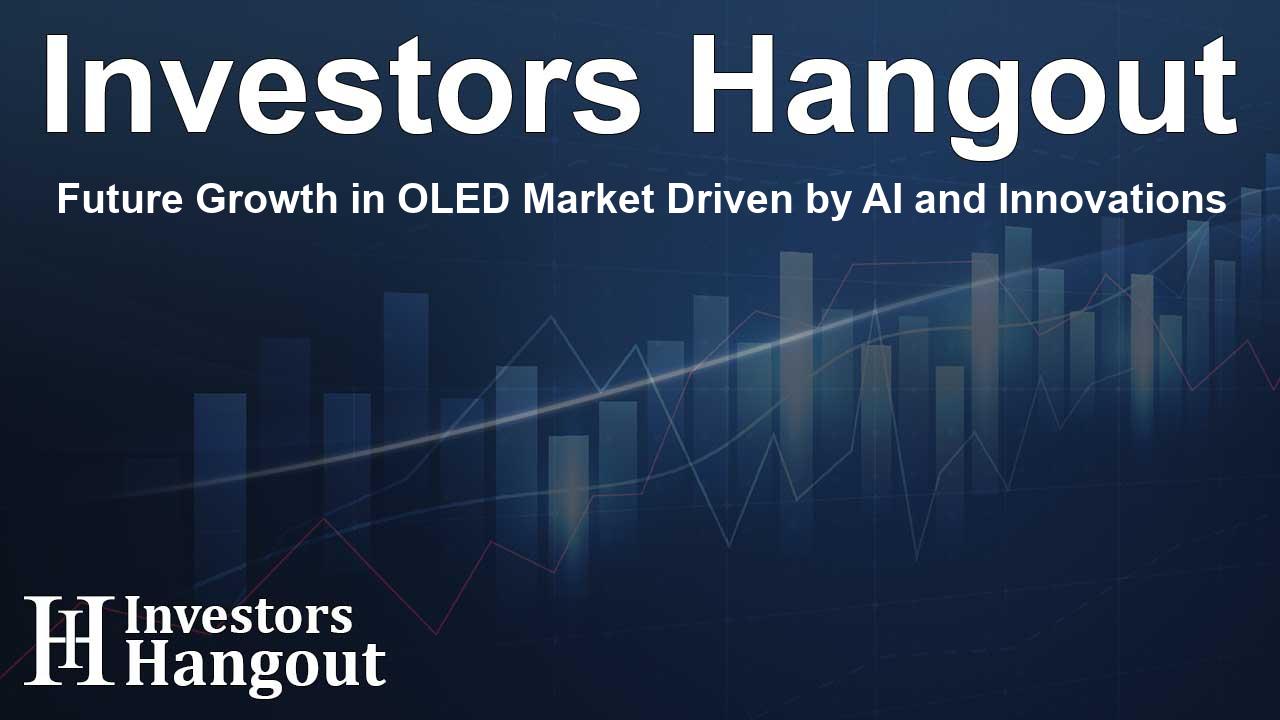Future Growth in OLED Market Driven by AI and Innovations

Future Growth in OLED Market Driven by AI and Innovations
The global organic light-emitting diode (OLED) market is on the brink of significant transformation, with an anticipated growth of USD 65.78 billion from 2024 to 2028. Research indicates that this market will enjoy a compound annual growth rate (CAGR) of 18.52% during this period, largely fueled by an increase in patent-related activities, especially from leading vendors.
Market Dynamics and Drivers
One of the primary catalysts for the OLED market's growth is the automotive industry's increasing reliance on advanced display technologies. OLEDs are rapidly gaining ground as the preferred choice for automotive displays due to their superior color accuracy, high contrast ratios, and broad viewing angles. These characteristics create an immersive experience for users, particularly in in-vehicle infotainment systems. As automakers push towards the adoption of technologies facilitating autonomous driving, the demand for integrated display systems and OLED screens is rising.
AI Influence on the Market
As artificial intelligence (AI) continues to influence various industries, its impact on the OLED market is becoming increasingly pronounced. AI technology enhances manufacturing processes, optimizes product designs, and improves user interfaces, all of which contribute to better OLED displays. This advancement in AI is paving the way for innovative applications that extend beyond conventional use, suggesting rich potential for market expansion.
Challenges Facing the OLED Market
Despite the optimistic forecasts, the OLED market does encounter hurdles that could impede growth. The primary challenge comes from the competitive landscape of alternative display technologies like LCD and LED, which benefit from lower production costs and longer lifespans. With well-established manufacturing processes, traditional displays dominate the market, creating a burden for OLEDs striving to capture a larger market share.
Durability and Production Costs
Another major point of concern for OLED manufacturers is the relatively high production costs associated with these displays. Manufacturing OLEDs often requires sophisticated technology and materials that are economically demanding. Moreover, OLEDs face challenges such as shorter operational lifespans compared to their counterparts, limiting their appeal in price-sensitive segments.
Segment Overview of the OLED Market
The OLED market is characterized by a broad array of applications that touch several industries, including consumer electronics, automotive, and lighting. The market can be segmented primarily into product categories, types, and geographical regions, each showing unique growth trends and consumer preferences.
Product Segmentation
Key product segments in the OLED market include OLED displays and OLED lighting solutions. OLED displays are becoming standard in devices ranging from smartphones to televisions, while OLED lighting is increasingly being integrated into modern architectural designs due to its efficiency and aesthetic appeal.
Geographical Insights
In terms of geography, the Asia-Pacific region currently dominates the OLED market, representing a substantial percentage of the global demand. Countries like China and South Korea lead in the production and consumption of OLED technology, driven by robust consumer electronics and automotive sectors.
Notable Players in the OLED Market
Several key players are significantly influencing the direction of the OLED market. Companies such as AUO Corp., BOE Technology Group, and Samsung Electronics are at the forefront, driving innovation and expanding production capabilities to meet surging demand. These companies are actively investing in research and development to further enhance OLED technology, striving to reduce costs and improve sustainability practices.
Future Prospects
As OLED technology matures, its versatility positions it well for future developments across various sectors. Innovations in display technology will likely emerge, emphasizing improved efficiency and responsiveness. This continuous evolution is essential for maintaining competitiveness against burgeoning alternatives.
Frequently Asked Questions
What is the projected growth of the OLED market?
The OLED market is expected to grow by USD 65.78 billion from 2024 to 2028, representing a CAGR of 18.52% during this timeframe.
What are the primary drivers for OLED market growth?
Key drivers of the OLED market include increased patent activities, the automotive industry's shift towards OLED displays, and the integration of AI in enhancing display technologies.
What challenges does the OLED market face?
The OLED market faces challenges from lower-cost alternatives like LCDs, high production costs, and shorter lifespans compared to traditional display technologies.
Which regions dominate the OLED market?
The Asia-Pacific region leads the OLED market, driven by strong demand from consumer electronics and automotive industries in countries like China and South Korea.
Who are the key players in the OLED market?
Significant players in the OLED market include AUO Corp., BOE Technology Group, Samsung Electronics, and LG Electronics, all of whom continuously innovate and expand their product offerings.
About Investors Hangout
Investors Hangout is a leading online stock forum for financial discussion and learning, offering a wide range of free tools and resources. It draws in traders of all levels, who exchange market knowledge, investigate trading tactics, and keep an eye on industry developments in real time. Featuring financial articles, stock message boards, quotes, charts, company profiles, and live news updates. Through cooperative learning and a wealth of informational resources, it helps users from novices creating their first portfolios to experts honing their techniques. Join Investors Hangout today: https://investorshangout.com/
Disclaimer: The content of this article is solely for general informational purposes only; it does not represent legal, financial, or investment advice. Investors Hangout does not offer financial advice; the author is not a licensed financial advisor. Consult a qualified advisor before making any financial or investment decisions based on this article. The author's interpretation of publicly available data shapes the opinions presented here; as a result, they should not be taken as advice to purchase, sell, or hold any securities mentioned or any other investments. The author does not guarantee the accuracy, completeness, or timeliness of any material, providing it "as is." Information and market conditions may change; past performance is not indicative of future outcomes. If any of the material offered here is inaccurate, please contact us for corrections.